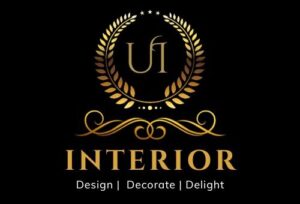Interior Designer: In a world where personalization is key, our homes serve as the canvas of our lives. From the colors on the walls to the arrangement of furniture, every element contributes to the unique story that unfolds within those walls. Interior design, often overlooked, plays a pivotal role in shaping our living spaces and enhancing our daily experiences.
I. Introduction: Interior Designer
A. Importance of Interior Design
Interior design goes beyond mere aesthetics; it’s a strategic blend of art and functionality. It transforms a house into a home, creating an environment that resonates with the personality of its inhabitants.
B. Impact on Living Spaces
The way we design our interiors significantly impacts our daily lives. From influencing our moods to providing functional spaces, interior design is the silent force that shapes our interactions with our homes.
II. Aesthetics Matter
A. Visual Appeal
A well-designed interior captivates the eye and creates a visually pleasing environment. Colors, textures, and layouts work together to craft spaces that are not only beautiful but also reflective of personal style.
B. Personal Expression
Interior design allows homeowners to express their individuality. It’s a creative outlet where personal preferences and unique tastes can be showcased, turning a generic space into a haven of self-expression.
III. Functional Spaces
A. Optimizing Layouts
Interior designers are experts in optimizing layouts. They consider the flow of movement, ensuring that each room serves its purpose efficiently while maintaining a harmonious connection with the rest of the house.
B. Enhancing Comfort
Comfort is not just about plush sofas; it’s about a thoughtful arrangement that makes everyday activities a breeze. From kitchen ergonomics to bedroom tranquility, interior design focuses on enhancing the comfort quotient of your living spaces.
IV. Psychological Impact
A. Mood and Emotions
Colors and patterns can influence our emotions. Interior design strategically incorporates elements that positively impact mood, creating spaces that uplift, soothe, or energize as needed.
B. Stress Reduction
A well-designed home becomes a sanctuary from the stresses of daily life. Thoughtful design choices contribute to a tranquil atmosphere, promoting relaxation and reducing overall stress levels.
V. Increased Property Value
A. Investment in Home Equity
Interior design is an investment that pays off. A well-designed home not only enhances the quality of life but also contributes to the overall value of the property, making it a wise financial decision.
B. Marketability
Should you decide to sell your home, a professionally designed interior becomes a selling point. Potential buyers are drawn to spaces that are not only aesthetically pleasing but also well-thought-out and functional.
VI. Trends and Innovation
A. Staying Current
Interior design trends evolve, and staying current ensures that your home remains stylish and relevant. Design professionals are adept at incorporating the latest trends while maintaining a timeless appeal.
B. Incorporating Innovations
From smart home technology to sustainable materials, interior designers bring innovation to your doorstep. They introduce cutting-edge elements that enhance both the functionality and eco-friendliness of your living spaces.
VII. Professional Touch
A. Expertise and Experience
Interior designers bring a wealth of knowledge to the table. Their expertise in color theory, spatial planning, and material selection ensures that your home is designed with precision and finesse.
B. Avoiding Costly Mistakes
DIY projects can lead to expensive errors. Design professionals help you navigate potential pitfalls, ensuring that your investment in your home is well-spent without unnecessary hiccups.
VIII. Customization and Personalization
A. Tailored Solutions
Every family is unique, and so should be their homes. Interior designers work closely with clients to understand their lifestyles and preferences, creating customized solutions that cater to individual needs.
B. Reflecting Lifestyle
A well-designed interior reflects the lifestyle of its inhabitants. Whether it’s a vibrant, family-friendly space or a minimalist retreat, interior design is the medium through which lifestyles are visually articulated.
IX. Sustainability in Design
A. Eco-friendly Practices
Interior designers are increasingly incorporating sustainable practices. From choosing environmentally friendly materials to optimizing energy usage, sustainable design contributes to a healthier planet.
B. Energy Efficiency
Smart design choices can enhance energy efficiency. From strategically placing windows to selecting energy-efficient appliances, interior design plays a role in creating homes that are environmentally responsible.
X. Building Long-lasting Impressions
A. Memorable Spaces
Interior design creates memorable spaces that leave a lasting impression. Whether it’s a cozy reading nook or a breathtaking foyer, well-designed spaces become ingrained in the memories of those who experience them.
B. Impressions on Guests
Your home is a reflection of your personality. A thoughtfully designed interior not only makes a lasting impression on you but also on your guests, setting the tone for memorable gatherings and experiences.
XI. Budget-Friendly Options
A. Myth of High Costs
Contrary to popular belief, interior design doesn’t always come with a hefty price tag. Designers can work within various budgets, offering cost-effective solutions that elevate the aesthetic and functionality of your home.
B. Smart Spending
Interior designers help you make informed decisions, ensuring that your budget is utilized efficiently. Their guidance prevents overspending on unnecessary items while maximizing the impact of your design investment.
